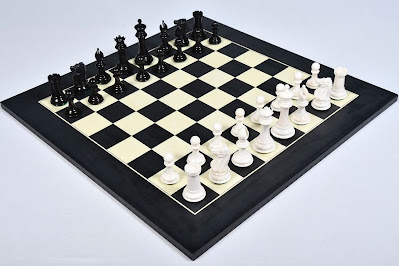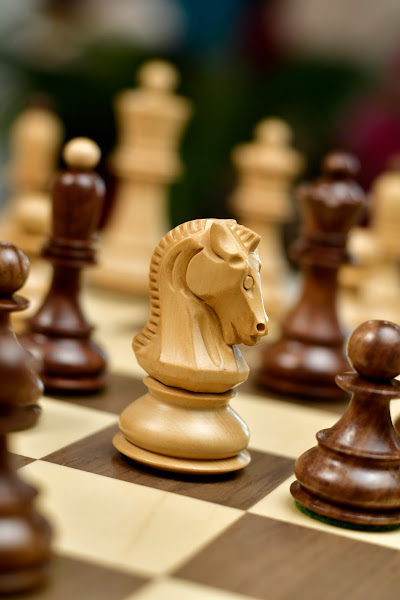Why Black and White Became The Standard Color Chess Pieces
Historically, chess was not always black & white. There were different combination of colors in chess which were often influenced by the customs of the region and culture, the time period and its fashions etc.
If you look at the origins of chess, in India, the colors of chess pieces were different. You may find chess set with pieces color of emerald and sixteen of ruby, i.e. the colors were green vs. red. These were for many centuries the predominant colors in traditional Indian chess sets.
In Europe the most popular chess sets were made from bone and ivory in the 19th century which include the export chess sets made in India and China for British colonial officers, they were in red and white, the red color were made from cochenille was the most expensive dye available at that time.
The combination of black and white color has long history. In the Persian epic Shahnameh written around 1010 AD by the Persian poet Abu ʼl-Qasim Firdawsi. Firdawsi - Chatrang-namak, the “Chess Book”, a Middle Persian text that tells how chess arrived at the Iranian court from India. This indicates that the pieces given to the Iranian ruler were made of ivory and teak, i.e. white and dark brown. So could be the origin of the color combination of white and black that is still common today.
Few reasons why black and white became standard:
Contrast: Black and white provide a clear contrast, making it easy for players to distinguish between their own pieces and their opponent's pieces on the board.
Tradition: The tradition of using black and white in chess likely stems from the fact that it's a simple and straightforward choice, using contrasting colors like black and white was practical and aesthetically pleasing.
Symbolism: Some speculate that black and white were chosen for their symbolic significance. White, traditionally associated with purity and light, is often given to the player who moves first, perhaps symbolizing an advantage or initiative. Black, on the other hand, is often associated with mystery or darkness and is given to the second player.
Universal Standardization: Over time, the use of black and white in chess set became standardized, making it easier for players around the world to understand and participate in the game. This standardization contributes to the global nature of chess, allowing players from different cultures and backgrounds to come together and compete using a common set of rules and conventions.



Comments
Post a Comment